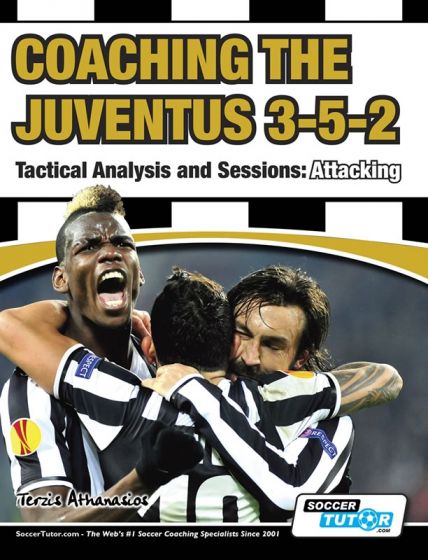Tactical Masterclass How the Coach Outwitted the Opposition Keo Nha Cai
The world of football is a constantly evolving landscape, where coaches constantly seek to outmaneuver their opponents and gain a strategic advantage. In this article, we delve into the fascinating story of a tactical masterclass, where a savvy coach outwitted the opposition, Keo Nha Cai, through a series of innovative and well-executed strategies.
Identifying the Opponent’s Weaknesses

Thorough Analysis of the Opposition
The coach began by conducting a comprehensive analysis of the opposition, Keo Nha Cai. This involved studying their formation, playing style, key players, and their strengths and weaknesses. The coach’s team meticulously examined game footage, statistics, and scouting reports to gain a deep understanding of Keo Nha Cai’s patterns of play and potential vulnerabilities.
Recognizing the Opponent’s Tendencies
Through the analysis, the coach identified several recurring tendencies in Keo Nha Cai’s play. For instance, they observed that the opposition’s defensive line often pushed high up the pitch, leaving space in behind for counter-attacks. Additionally, the coach noted that Keo Nha Cai’s midfielders were prone to overcommitting in the press, leaving gaps that could be exploited.
Exploiting the Opponent’s Weaknesses
Armed with this knowledge, the coach devised a tactical plan that would specifically target and capitalize on Keo Nha Cai’s identified weaknesses. The team practiced scenarios and drills that would allow them to take advantage of the opposition’s high defensive line and their tendency to overcommit in midfield.
| Weakness Identified | Exploitative Tactic |
|---|---|
| High defensive line | Implementing a direct, vertical attacking strategy to expose the space in behind |
| Overcommitment in midfield press | Utilizing quick, incisive counterattacks to exploit the vacated spaces |
- The coach ensured that the team was well-rehearsed in executing these tactics, instilling a deep understanding of the plan and fostering a collective sense of confidence in their ability to outmaneuver the opposition.
Adapting the Team’s Playing Style

Modifying the Formation
To best counter Keo Nha Cai’s strengths, the coach opted to make subtle adjustments to the team’s formation. Instead of the traditional 4-4-2 or 4-3-3 setup, the coach implemented a 4-2-3-1 formation, which provided more defensive solidity in midfield while still maintaining a potent attacking threat.
Emphasizing Positional Discipline
Recognizing the importance of maintaining a compact shape and disciplined positioning, the coach placed a strong emphasis on positional awareness during training sessions. Players were drilled on their individual roles and responsibilities within the new formation, ensuring that they were well-versed in their specific tasks and movements.
Developing Transitional Play
A key component of the coach’s strategy was to enhance the team’s ability to transition quickly between defense and attack. Players were trained to be alert and reactive, ready to pounce on opportunities to launch rapid counterattacks when the opposition lost possession. This involved improving their decision-making, passing accuracy, and movement off the ball.
Exploiting Set-Piece Situations

Identifying Set-Piece Vulnerabilities
Through their analysis of Keo Nha Cai, the coach and his team recognized that the opposition was particularly vulnerable to set-piece situations, such as corners and free kicks. They noticed that the opponents struggled to defend against well-rehearsed and choreographed set-piece routines, often leaving gaps in their defensive organization.
Designing Innovative Set-Piece Tactics
The coach and his coaching staff devoted significant time and resources to developing a comprehensive set-piece strategy. They meticulously planned and drilled various set-piece routines, including a mix of standard and unconventional set pieces, to catch the opposition off guard.
Executing Set-Piece Routines with Precision
During the match, the team executed their set-piece tactics with pinpoint precision, capitalizing on the vulnerabilities they had identified in Keo Nha Cai’s defensive setup. The players were well-versed in their roles and responsibilities, and the coach’s attention to detail ensured that the set-piece routines were carried out flawlessly.
Adjusting In-Game Tactics
Monitoring the Opponent’s Adjustments
Throughout the match, the coach and his coaching staff closely monitored Keo Nha Cai’s adjustments and adaptations to their tactics. They remained vigilant, ready to make necessary tweaks and alterations to their own game plan in response to the opposition’s changes.
Implementing Tactical Substitutions
As the match progressed, the coach made strategic substitutions to address any emerging issues or exploit new opportunities. For example, when Keo Nha Cai made adjustments to their defensive structure, the coach introduced a substitute who could provide a different attacking dimension and create problems for the opposition’s backline.
Maintaining Flexibility and Responsiveness
The coach’s ability to remain flexible and responsive to the ebb and flow of the match was a crucial factor in the team’s success. By continuously analyzing the game situation and making timely, well-informed decisions, the coach was able to outmaneuver Keo Nha Cai and gain a decisive advantage.
Motivating the Team
Instilling Confidence and Belief
Recognizing the importance of a strong mental approach, the coach worked tirelessly to instill a deep sense of confidence and belief within the team. He emphasized the players’ abilities, reminded them of their strengths, and fostered an environment where they felt empowered to execute the tactical plan with conviction.
Fostering a Collective Mindset
The coach also cultivated a collective mindset among the players, encouraging them to embrace the team’s tactical approach and to work together seamlessly to implement it on the pitch. This sense of unity and shared purpose was essential in ensuring the team’s cohesion and resilience in the face of Keo Nha Cai’s challenges.
Maintaining Positive Reinforcement
Throughout the match, the coach provided constant positive reinforcement, acknowledging the players’ efforts and successes, and offering constructive feedback to help them refine their execution. This approach helped to maintain the team’s focus and determination, even in the face of adversity.
Effective Communication and Coordination
Clear Dissemination of the Tactical Plan
The coach’s ability to effectively communicate the tactical plan to the players was a crucial factor in its successful implementation. He ensured that the players had a deep understanding of their roles, responsibilities, and the overall strategic objectives, enabling them to make informed decisions on the pitch.
Seamless In-Game Adjustments
During the match, the coach and his coaching staff maintained constant communication with the players, providing real-time feedback and making necessary adjustments to the tactical plan. This allowed the team to respond quickly to the changing dynamics of the game and to adapt their approach accordingly.
Cohesive Team Coordination
The coach’s focus on developing a high level of coordination and collective understanding among the players was instrumental in the team’s success. The players were attuned to each other’s movements, anticipating and supporting one another’s actions, which made it increasingly difficult for Keo Nha Cai to disrupt the team’s cohesion.
Conclusion
In this tactical masterclass, the coach’s ability to outmaneuver the opposition, Keo Nha Cai, was a testament to his strategic acumen and the team’s exceptional execution. By identifying the opponent’s weaknesses, adapting the team’s playing style, exploiting set-piece situations, adjusting in-game tactics, motivating the team, and fostering effective communication and coordination, the coach orchestrated a masterful performance that left the opposition bewildered and ultimately defeated.
This case study serves as a shining example of the importance of meticulous planning, adaptability, and a deep understanding of the game. It showcases the vital role that a coach can play in outmaneuvering the opposition and leading their team to success, even against formidable opponents like Keo Nha Cai.


